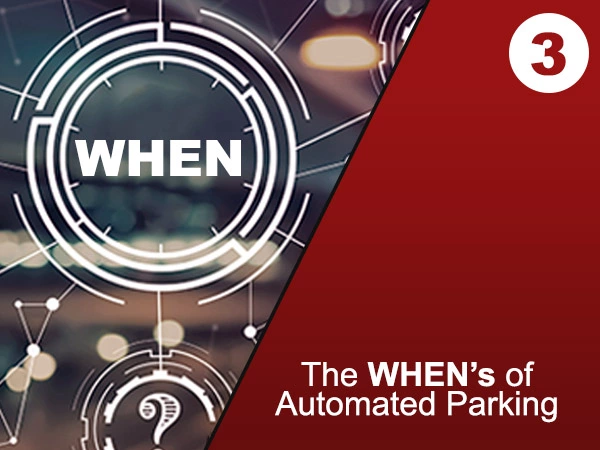
Automotive sales have been increasing at a tremendous rate over the years, leading to greater demand for infrastructure to park these vehicles. However, while on-street and off-street parking have been widely adopted across the globe, there is a considerable demand for parking spaces that use less land area, while ensuring that the available space is optimized.
This is the third installment of Westfalia’s “Envision APS” blog series – The When’s of Automated Parking. Stay tuned for the rest of the series as we cover more common questions that we are asked in the context of automated parking systems (APS). The questions will be categorized into who, what, when, where, why and how. If you have a question we don’t cover, send them to us or use #envisionAPS on social media and a member of our team will personally reach out!
Part 1: The WHO's of Automated Parking
Part 2: The WHAT's of Automated Parking
When should I talk to someone about wanting to consider automated parking for my new project?
With the rise of environmental concerns and consumer convenience, the time to consider automated parking is now. Today, more than ever, APS are needed. Public parking spaces such as traditional parking lots and garages, take up valuable real estate and induce stress for drivers and pedestrians. Furthermore, public safety concerns arise due to having to drive in poorly lit garages with tight corners and poor signage, as well as environmental concerns because of the total amount of energy consumed, and emissions produced, in traditional parking lots and garages.
APS also allow for more benefits compared to traditional parking garages, creating room for condos, retail spaces, apartments and more, which in turn creates additional profit.
When will this technology be available?
Automated parking systems are readily available now! Global automotive sales are reaching new heights every year. Although good for the automotive industry, developers are finding it hard to accommodate the rising demand for parking as a result. With APS already available, developers can keep up with the growing automotive sales and be given the opportunity to create extra real estate. APS should be considered in all projects due to its positive environmental impact, space saving capabilities, advanced technology and customizable business solutions.
When should I discuss capacity planning with my APS supplier?
Now! If a building structure is designed or built before talking to an APS supplier, it becomes much more difficult to go back and implement automated parking. Depending on the layout, the planning and actual implementation of an automated parking system can take anywhere from 12 to 18 months. For a structure to be properly designed, talk to your APS supplier as soon as possible. With this in mind, it is crucial to find an APS supplier who will be upfront and transparent throughout the process and begin the discussion early in the planning process. The earlier you contact your APS supplier, the more planning opportunities will be available, which can net a developer more space, more unique building aesthetics and amenities, more user comfort, and greater profit opportunity.
When is the Parking Equipment Tested?
At Westfalia, all parking systems equipment is tested at our manufacturing facility before delivery to the customer site. This ensures that the equipment is manufactured and wired correctly, which results in reduced commissioning time on-site. Our plants, located in Pennsylvania, USA and Borgholzhausen, Germany, are specifically equipped for proper testing procedures.
Savanna.NET® Parking Control System (PCS) software testing is done with equipment simulators to validate the software functionality and correct responses in typical situations. After the in-house test is completed, computers and related equipment are shipped to the automated parking garage site where the final on-site testing and training will be conducted.
